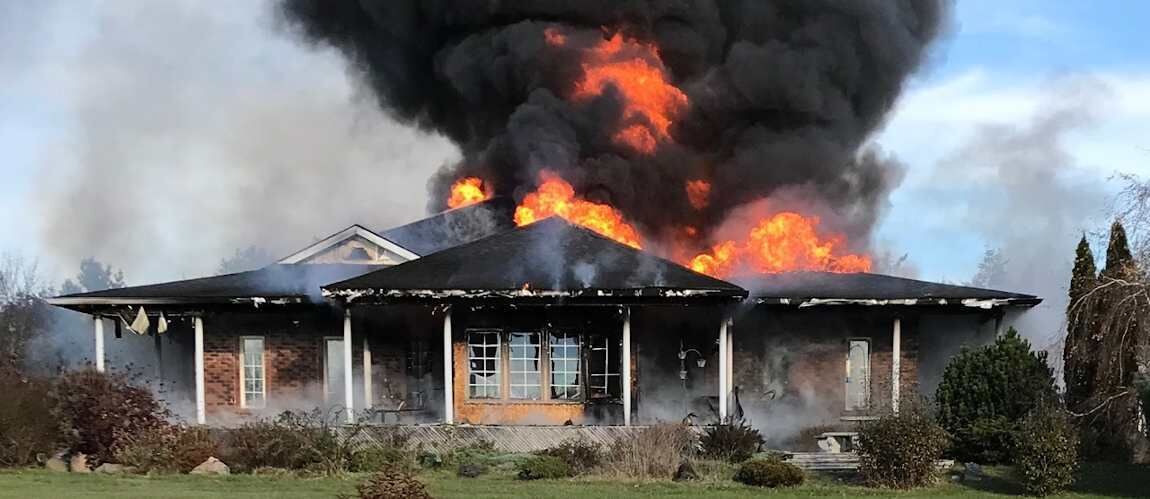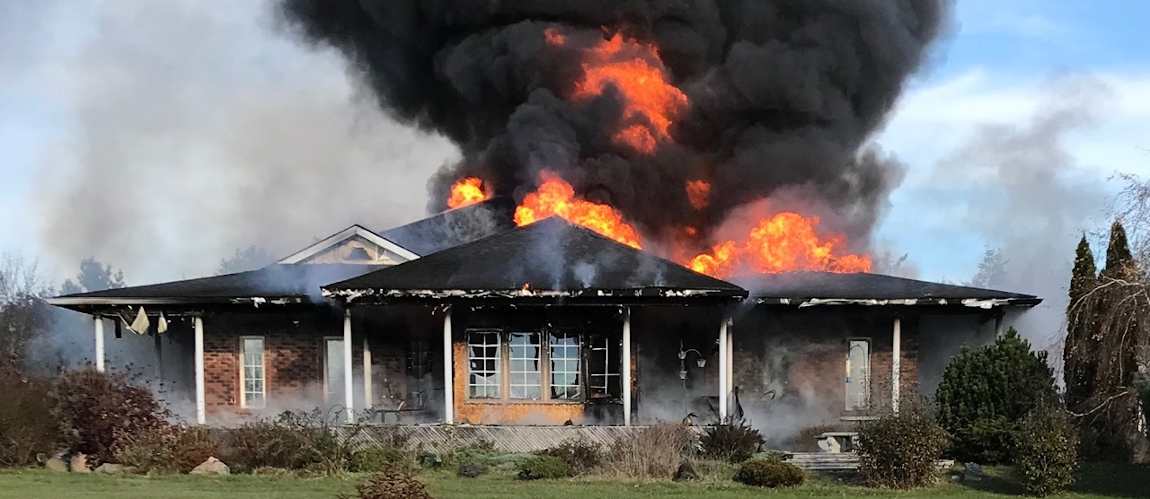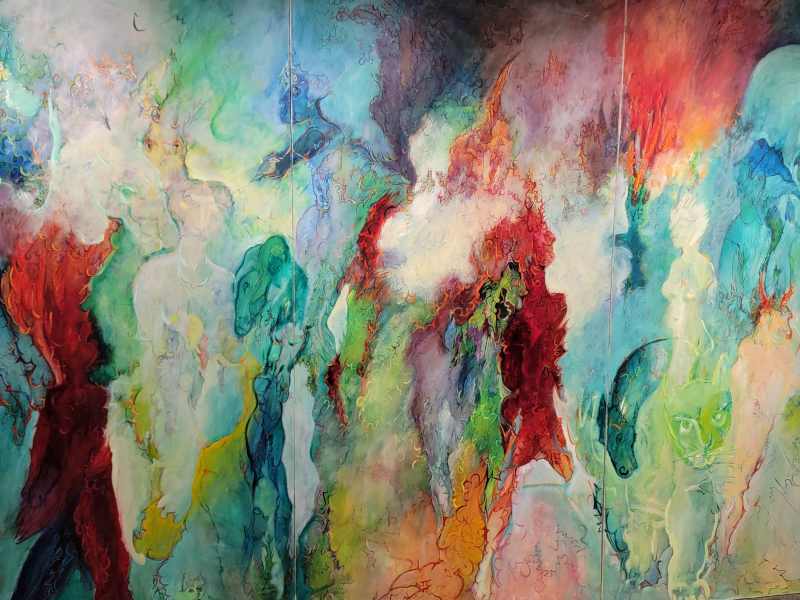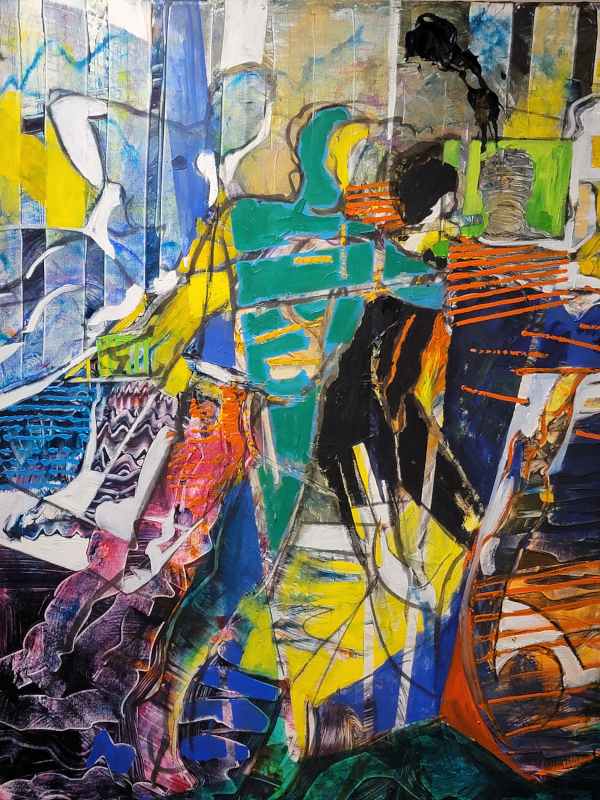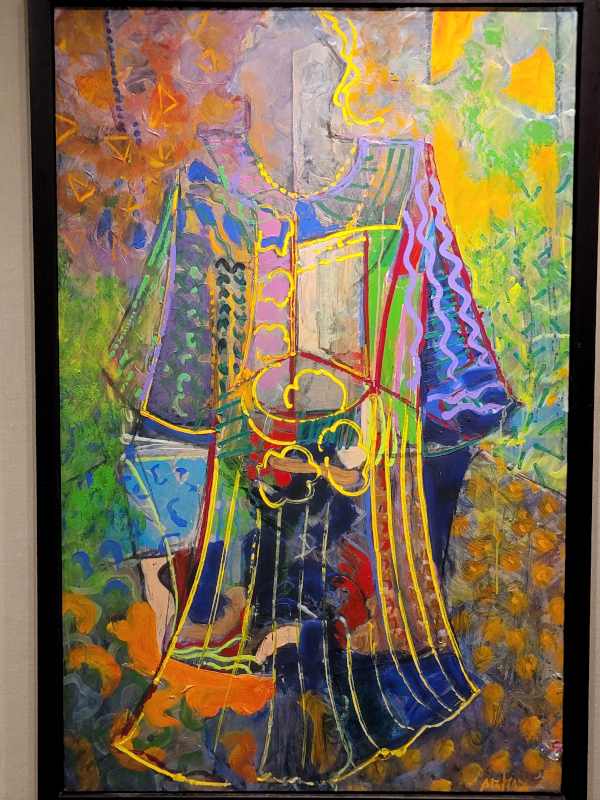To celebrate Graham Metson’s living and working as a successful and accomplished artist in Canada for over fifty years, the Parrot Gallery in Belleville invited him to present a substantial exhibition in recognition of this considerable achievement.
The last time I had the opportunity to write about Graham Metson was in the fall issue of Grapevine Magazine 2021, (see grapevinemagazine.ca), to coincide with a show at Hatch Gallery, Bloomfield. Shortly after that event, his house in The County burnt to the ground. Fortunately, despite a soaking from fire hoses, much of the work stored in the basement survived. However, the studio and works within were destroyed, which added a historic poignancy to the photographs I had only recently taken. No stranger to fires, it would seem, Metson lost many works when one of his previous storage facilities burnt down whilst he was working in the United States.
As a war child (or Blitz Kid as he would say*), Metson is no stranger to the destructive force of fire. His talent for painting was discovered at primary school, where he was encouraged by a substitute teacher: his previous one having been killed in an air raid. He was to survive the deadly blast of the first ever V2 rocket to land on London. Unsurprisingly, childhood wartime experiences haunt Metson’s work to such an extent that it was barely ironic when he recently found replacement studio premises at Base 31, formerly Camp Picton, built to be a Canadian Air Force school of bombing and gunnery in WW11. Images of wartime, though refined and filtered by his artistic vision, proliferate in the work. Metson has authored books about the Halifax Explosion in 1917 and Alex Colville, the war artist. A previous exhibition was entitled Immolation which adds a sacrificial and mystical dimension to notions of cleansing and rebirth traditionally associated with fire.
Metson was to join the Royal Air Force completing his National Service working in Air Traffic Control and Meteorology. National Service proved to be a stroke of luck as the air force paid for Metson to attend Cambridge College of Art where he studied life drawing and painting. His enthusiasm for art and his friendly manner were recognized by none other than the poet Sylvia Plath, who recommended he continue his studies to become a teacher. Taking her advice seriously, he applied and succeeded in securing a place at the College of St. Mark and St. John on the King’s Road, Chelsea.
By 1956 having completed teacher training and secured a position in Dagenham, in east London, an invitation arrived to tour the DDR. That summer he was able to visit every major city in the German Democratic Republic including Buchenwald. (Buchenwald was a concentration camps where 56,000 people were murdered.) This trip also brought the opportunity of meeting and showing his work to John Heartfield, the founder of the Berlin section of the Dada art movement. Dada was an art movement that represented the utter rejection of the supposedly rational and traditional values which Dadaists held responsible for causing the madness of World War 1. Dada brought with it an artistic revolution that rejected both orthodox materials and subject matter. Instead, litter, discarded bus or train tickets, or images torn from magazines and newspapers were combined together into what we now know as collages. (Derived from the French papier colle and the verb to glue…coller.) John Heartfield and Raoul Hausman even rejected their identity as artists, preferring to think of themselves as engineers who between them pioneered photomontage.
Heartfield spoke of the other founding members of Dada, George Grosz and Kurt Switters, before advising the young Metson to “not get involved in politics or you’ll become a propagandist.” He also let Metson understand that during every moment of his visit to the DDR, he was under surveillance by the Stasi, the East German secret police. This experience connects a young man whose childhood was indelibly marked by the Second World War to his artistic antecedents who had experienced the previous one, and links his earlier output to those artistic developments upon which it was based. Metson’s early works used images cut or torn from periodicals such as the Picture Post and Life Magazine.
His works frequently juxtapose shattered but recognizably figurative outlines against a diffuse floating screen like background. In my earlier fall writing, I proposed a theory that this approach might have been fostered at school and might betray the influence of a classroom blackboard with its cloudy diffuse background upon which sharply delineated letters, or marks, are superimposed. Now, having a better understanding of Metson’s biography, I wonder if this also reflects his time spent studying meteorology.
The late 1950s was a period of great artistic turmoil and development, with the tide turning against convention and representative painting with movement towards abstraction and later the emergence of Pop Art. Metson seems to have absorbed as much as he wanted of these contrary influences, particularly Richard Hamilton and Francis Bacon, but continued on his own path and remains resolutely a painter of figures, particularly of figures in motion, without in any way being confined or constrained by the figure. The purpose of painting remains exploration, and to “paint things I have not seen.”
The exhibition, entitled with some irony, Rising from the Ashes, opens on June 18 and runs to August 20 and occupies both galleries one and two. A reception will be held on July 9 at 2.30pm.
*Blitz Kid is Metson’s memoir of his wartime experiences and can be found on his website https://grahammetson.com

